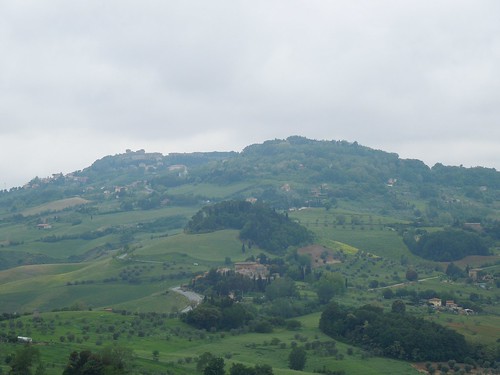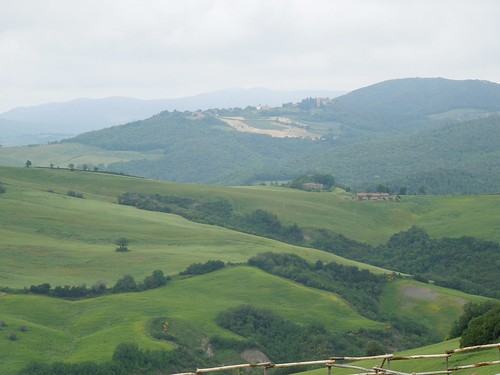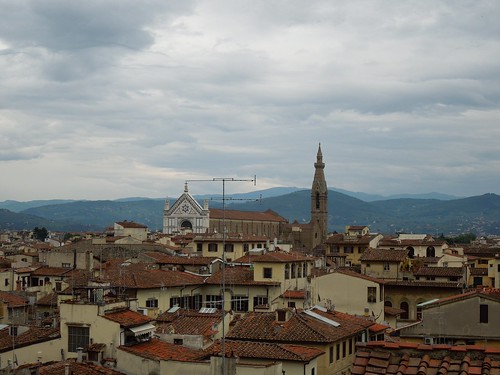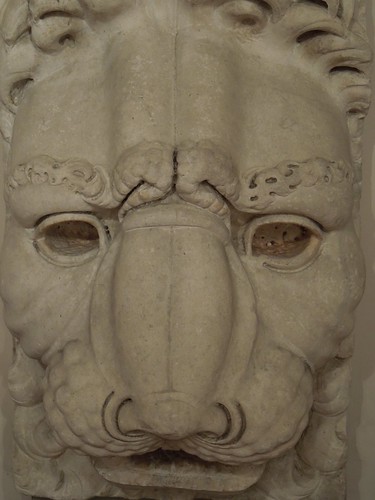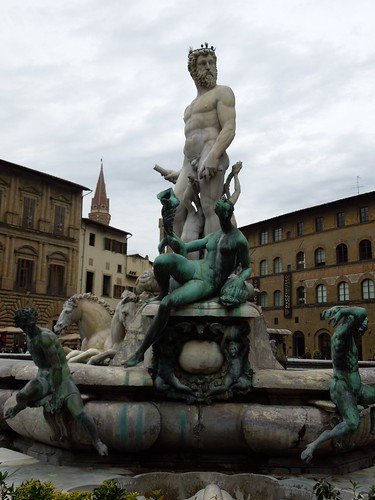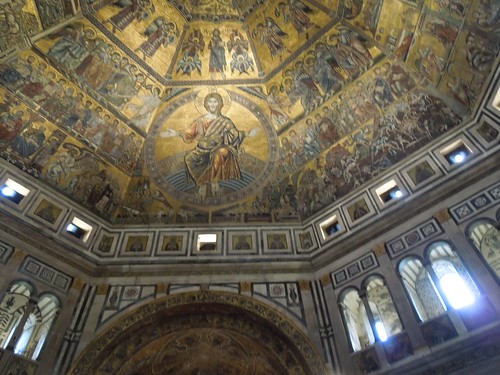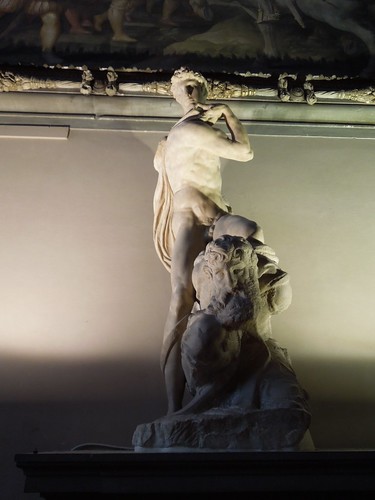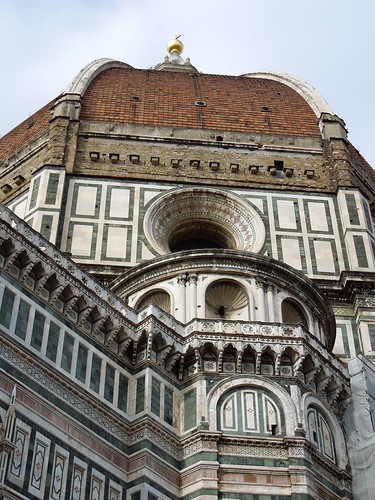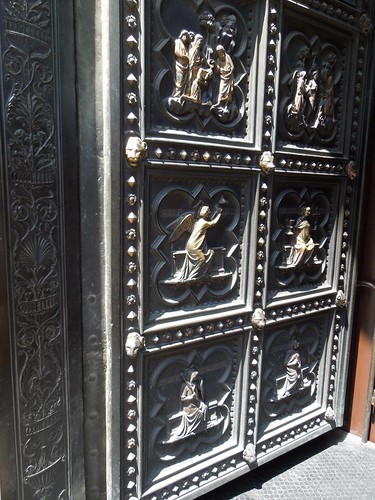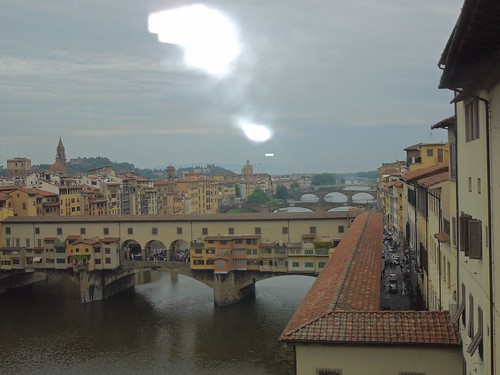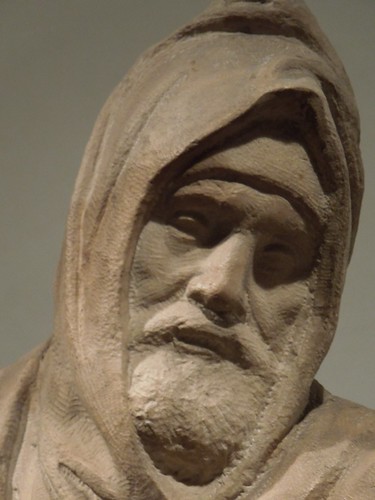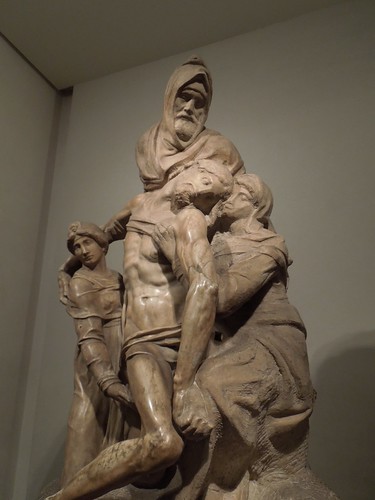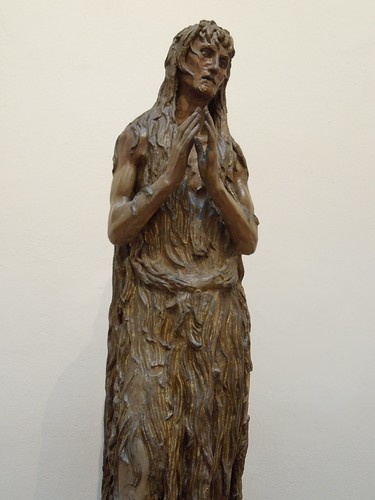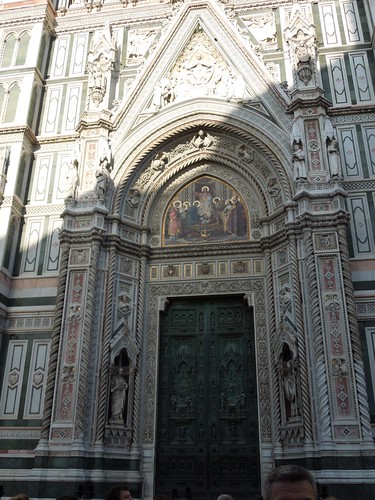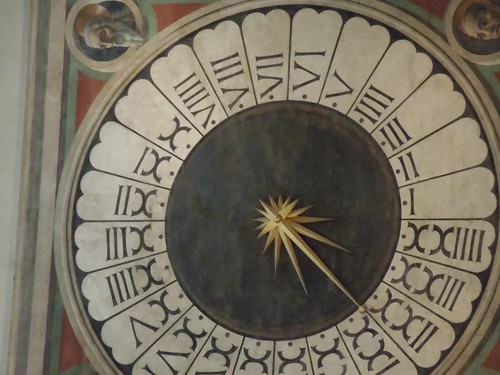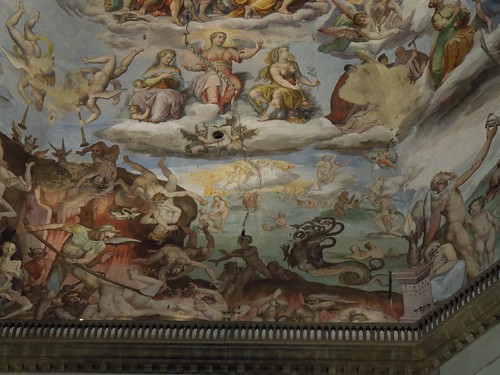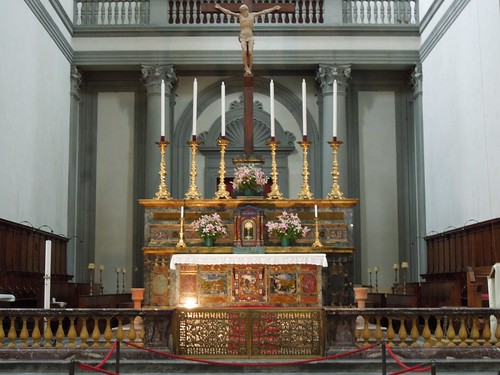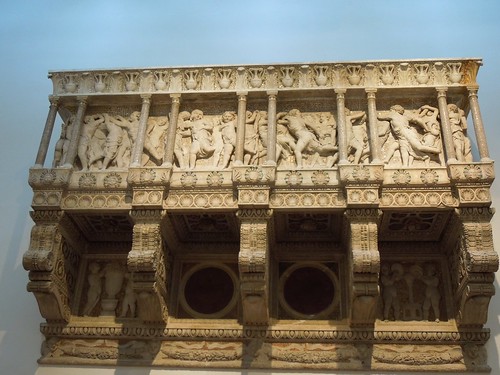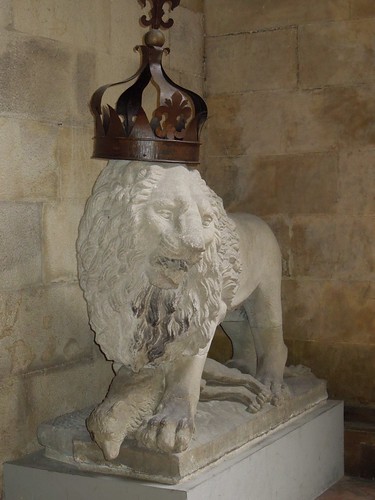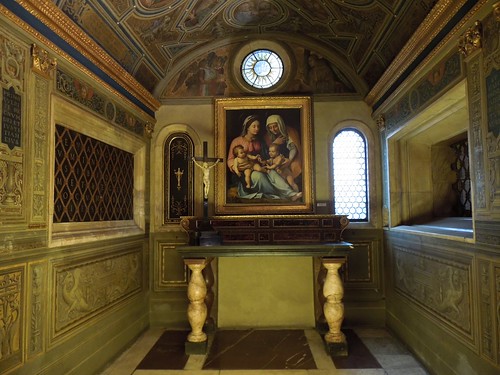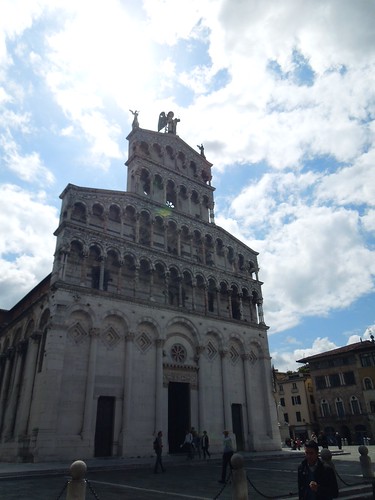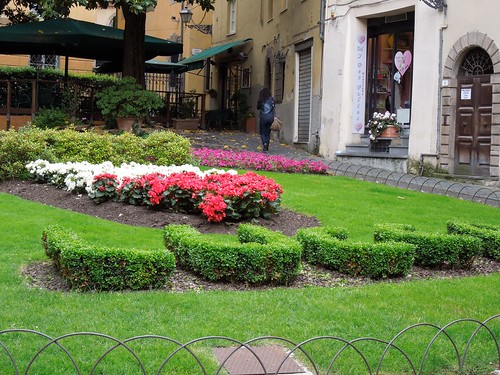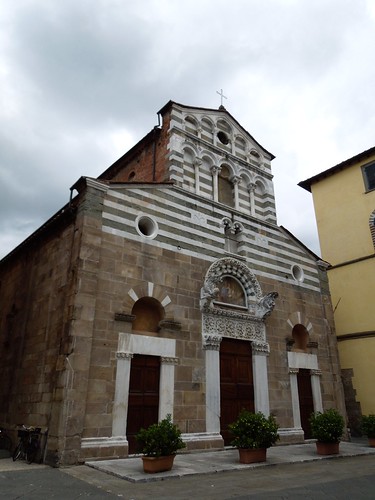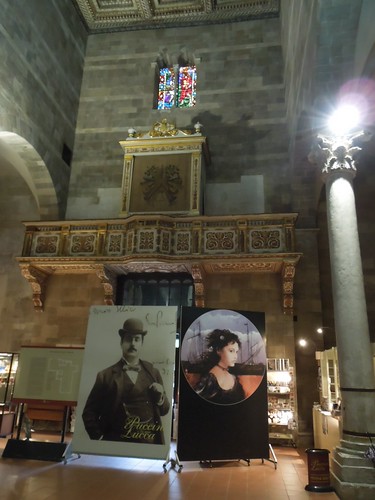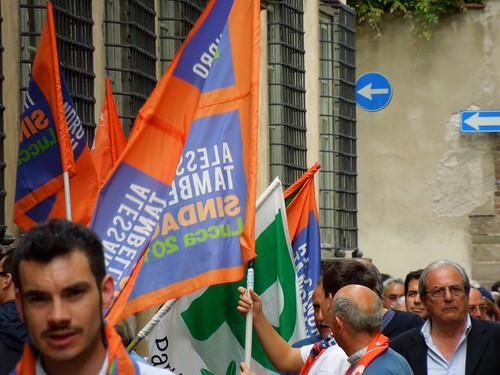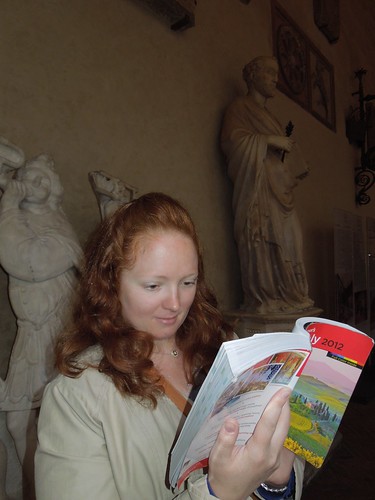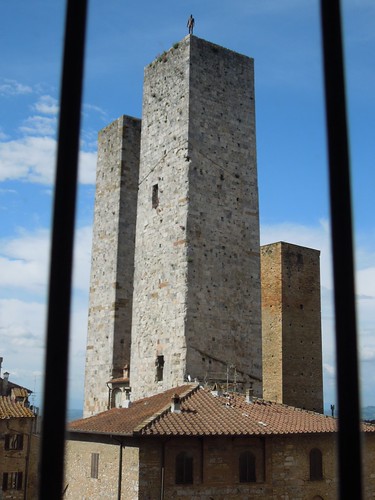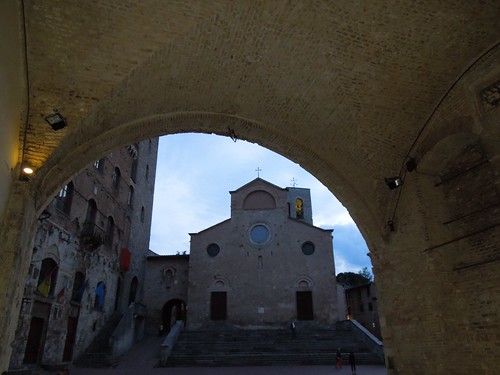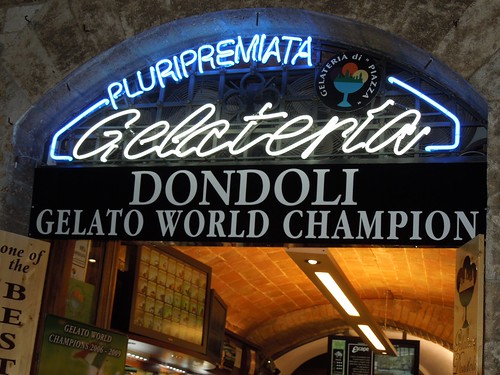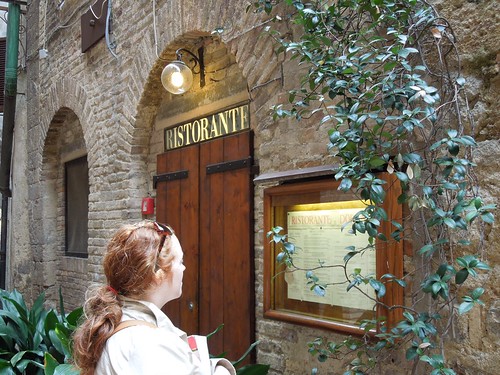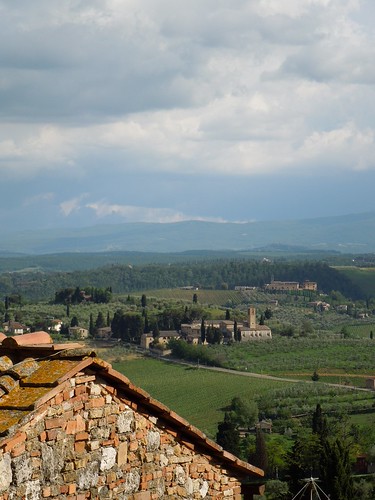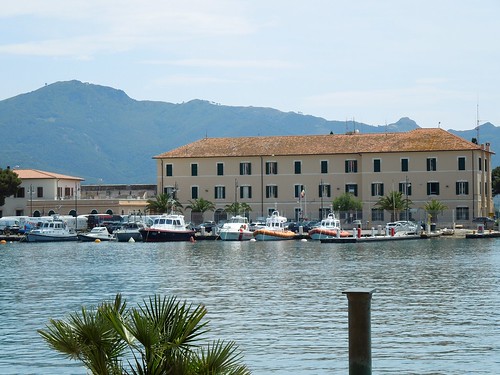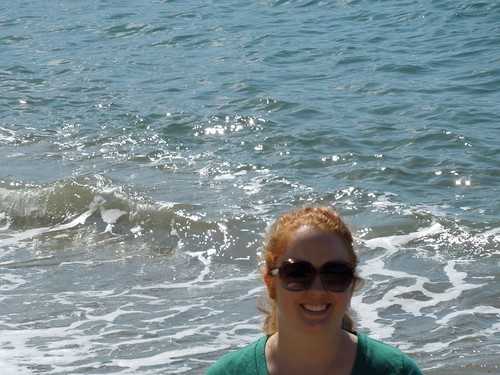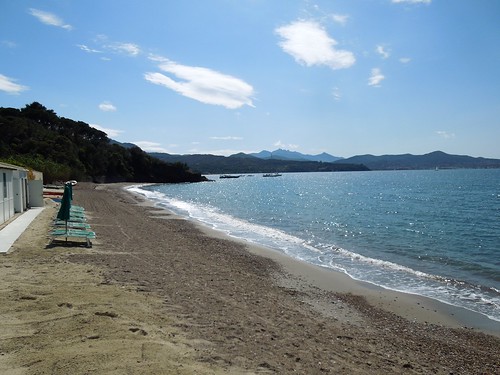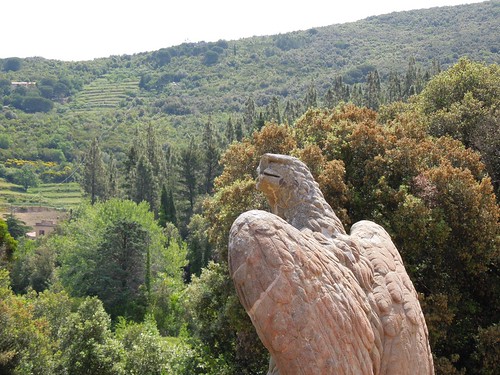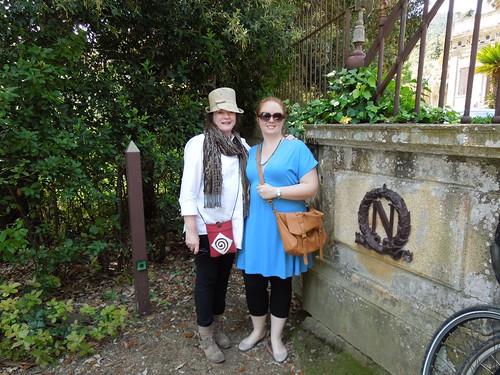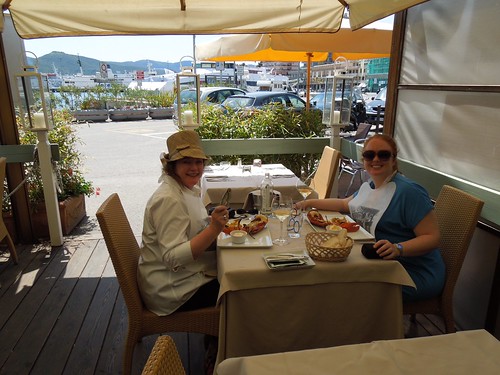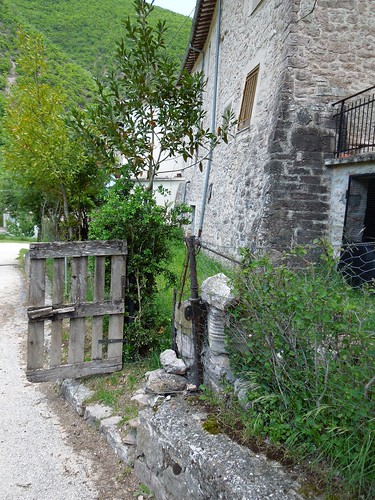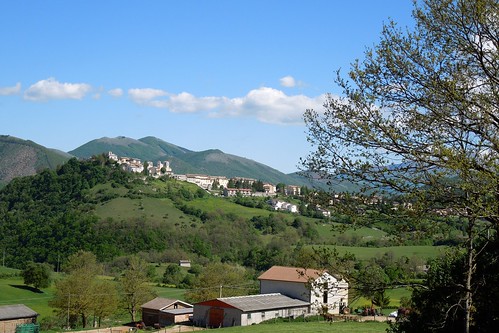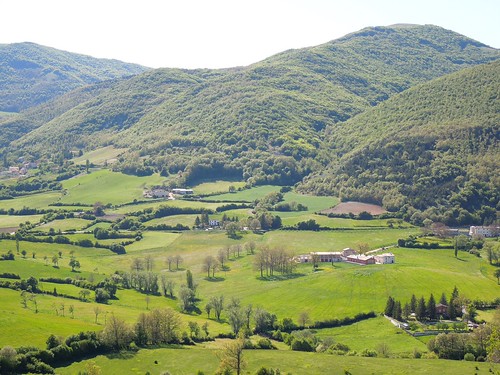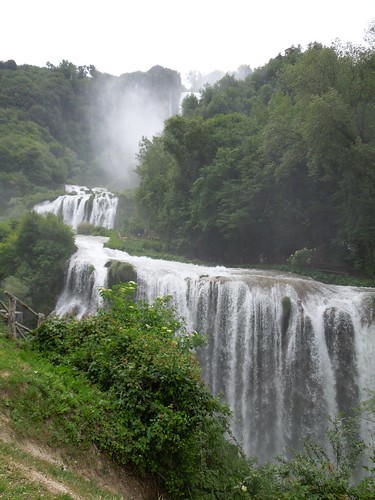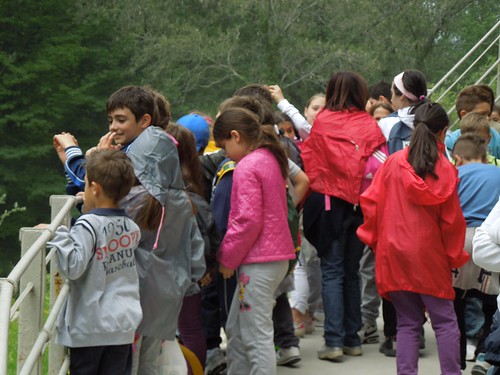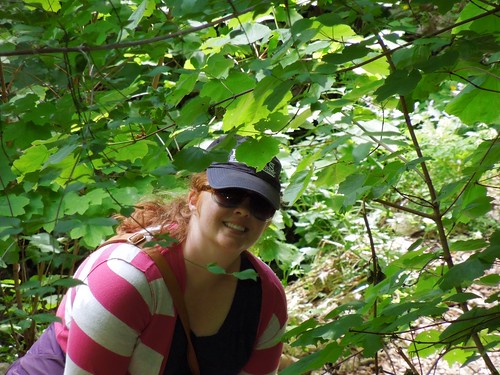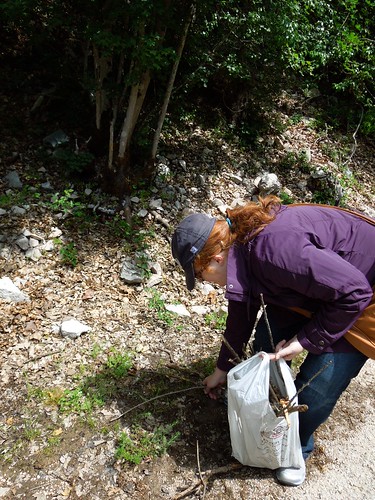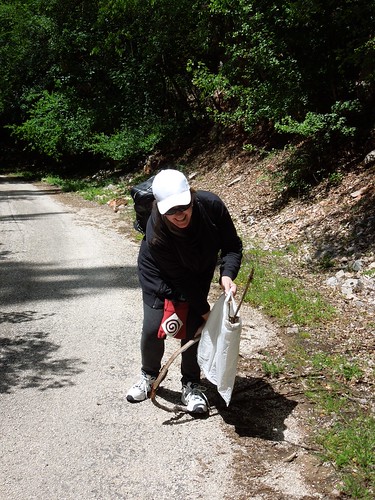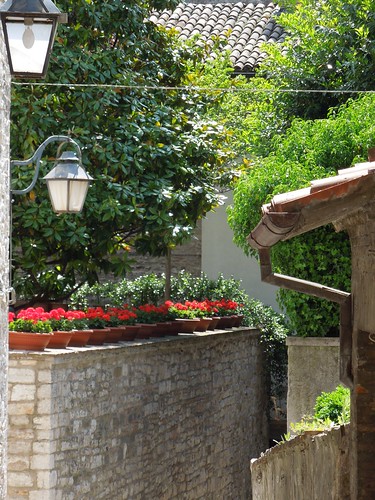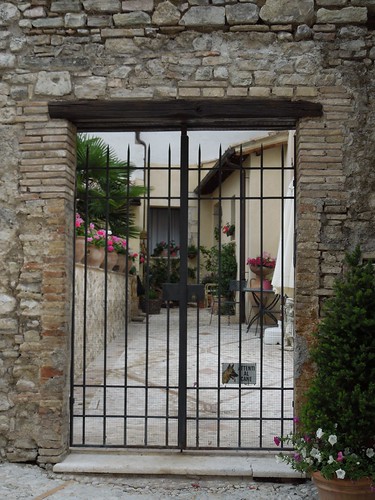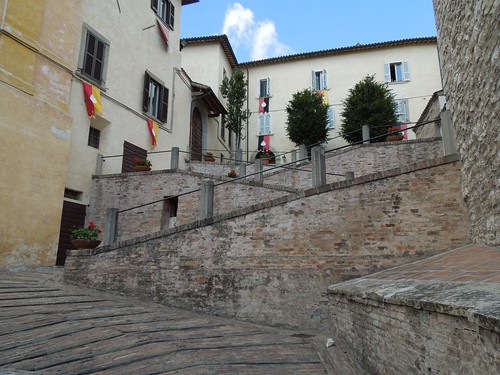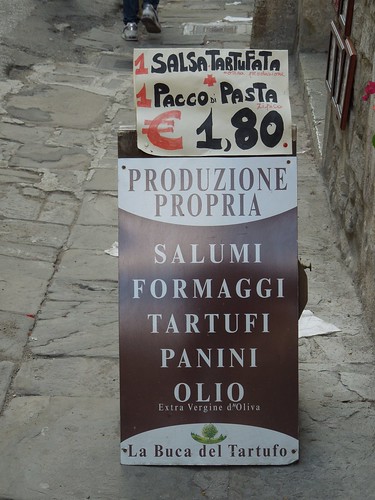Katherine and I left our beautiful village in Umbria and headed North to Tuscany, the region bordering Umbria. Tuscany is very well known to Americans. Florence,Siena, Lucca, San Gimignano, and of course the fine wine produced in this area. When Katherine and I were searching for a home in Italy for our 6 week stay, we priced properties in Tuscany and in Umbria. For the same accommodations that we have chosen, we would have paid 2 - 3 times the price for the rental. After visiting Tuscany we noticed that all of the cities have American tourists. The prices for villas for sale are 2 - 3 times the price they would be in Umbria. This holds true for meals, wine, and general costs of items. We managed through the help of Arthur Frommer who published the first travel books on "Europe on $5 a Day" in the 1960's, to find great accommodations in the central square for very reasonable prices. Frommer's hotel recommendations are always very accurate, however, a lot of his restaurant recommendations are a bit stale. Most of the places we have stayed were converted villas, boarding schools, monasteries or convents - which is the reason why they have been so central. The better, upscale hotels require more rooms to meet their costs and they are located outside the city walls. Our small properties - maximum 60 rooms - are all in the city walls, and provide a place to park the car. Now, for my huge Mercedes it is a major challenge to make a sharp right behind a wall that is 2 inches wider than my car. It takes a bystander or Katherine to motion me in these tight quarters. But the car is put to bed in a safe place, guarded by video or personnel, and we can walk to all of the attractions, and drink at lunch (yes we are drinking wine at lunch!!), and enjoy our cocktails on the piazza in the evening while we guess nationalities based on fashion of the people strolling by. We now call ourselves the "fashionistas".
FLORENCE
There have been numerous books written about this majestic city. I can only relay my favorite impressions of the birthplace of the Renaissance, an amazing creative outburst from the 14th - 16th century that changed the world. The Medicis, a Florentine empire family, oversaw the unrivaled repository of art and architectural treasures - Botticelli,Brunelleschi,Cellini, Donatello,Fra Angelico,Ghiberti, Leonardo, Michelangelo, and Raphael - just to name the luminaries.
Florence has been wise to keep the inner Renaissance core free of modern architecture and polluting industry. The palaces look severe and almost fortress like, a characteristic of the Medici style - there were always enemies during these centuries to keep at bay. The most popular man in the world is "David", Michelangelo's "David" of course. He began work on "David" when he was 29. He took a 20 foot piece of marble that was discarded by Duccio and turned it into Il Gigante (the Giant) - he was obsessed with this work; he set out to create a "David" who would be like Apollo, but more; Hercules, but more; Adam, but more;the most fully realized man the world had yet seen, functioning in a rational and human world". The sculpture is overwhelming. I can't count how many visits in my life I have made to the Accademia to view this treasure. I am thankful that the Italians built the Accademia in 1873 for "David". Initially it was located in the Piazza della Signoria when it was unveiled in 1504, and suffered damage from the elements for over 300 years. On its 500th birthday in 2004 it received a through cleaning, and it has regained it's initial lustre.
Also in the Accademia are Michelangelo's "Prisoners "or" Slaves" . He worked on these 4 "Slaves" for 40 years, and was never pleased with them. They are very dramatic in their present state. They were meant for the tomb of Pope Julius II.
MEDICI FAMILY
I cannot elaborate further without expressing my total curiosity for this family. Born of humble beginnings they rose to power from 1435 until 1750. They produced 4 Popes, and two queens of France. The family intermarried with all of the royality of Spain and England. They sponsored the greatest artists and architects in the world; and they encouraged Galileo, who tutored their children, to pursue his scientific endeavors. Galileo named the four largest moons of Jupiter after the Medici children, however the names were later changed. At one time they were the wealthiest family in Europe. They made their money in banking, and heads of the Guilds when the entire European continent was in turmoil. Cosimo III ended the dynasty with religious persecution, and heavy taxing. Tuscany went bankrupt, and a conservative reign changed the dynamics of the region. Without their sponsorship we would not have this great legacy today.
PALAZZO PITTI
The massive bulk of the Palazzo is one of Europe's greatest artistic treasure - troves, second only to the Uffizi. Brunelleschi, the architect who designed the Duomo in Florence built the palace. These masterpieces are placed one on top of each other. In one room Titian's greatest works were hung; 7 in all - "Man with the Gray Eyes" and "Mary Magdalene". Each room of the massived palace had 3 -4 Rubens, 4 or 5 Raphael's including his "Madonna of the Chair" and "La Velata" - his two most famous and considered best works. The opulance of the apartments in this palace where the Medici's resided is incomparable. Each room boasts a fresco on the ceiling adorned with elaborate gold enameled relief work.
UFFIZI GALLERY
When the last Medici grand duchess died in 1737 she bequeathed to the peopl of Tuscany a wealth of Renaissance and even classical art. The paintings and sculptures had been accumulated by the powerful grand dukes during 3 centuries of rule during the height of the Renaissance. The palazzo was commissioned by Duke Cosimo de Medici in 1560 for his offices. (Uffizi means offices in Italian)
How can one begin to enjoy this small by most standards collection. Filippo Lippi's "Coronation of the Virgin", da Vinci's "Adoration of the Magi" ; Perugino's "Madonna" ; Michelangelo's "Holy Family", one of the few panel paintings by him, as well as the frame that he designed; and of course the man who is the big draw - Botticelli's "Birth of Venus". He was the great master of women in flowing gowns, or "little barrels" as he was nicknamed. His "Allegory of Spring" and of course his "Adoration of the Magi" in which there are portraits of the Medici family. I particularly enjoy Botticelli's use of highlights in women's hair. Women pay their hairdressers a fortune to "highlight" their hair - perhaps Botticelli started this trend?
Correggio's "Rest on the Flight to Egypt". He established the transition between Renaissance and Baroque art. School of "Parma", this was a more troubling and melancholy personality with elongated forms, and cold colors.
BARGELLO MUSEUM
A 1255 fortress palace whose dark underground chambers echoed with the cries of the tortured when it served as the city's jail during the Renaissance. Yes, sad, but true, the Renaissance wasn't all about art and architecture, but there were crimanals and jails. Even the eldest of Giovanni Medici's son, Cosimo was banished from Florence to Siena, and then returned triumphant. Dante, who was loved for his "Divine Comedy", was also a "bad boy" - buried in Siena. Siena , rivaled Florence for centuries, but it could never capture the artistic community that the Medici's created in Florence. Even my favorite, Duccio, who established the Sienese school, and some say - arguably so was the creator of the Renaissance could not divert the attention from Florence.
Back to prison - housing the most magnificant sculpture in the world, the Bargello. Michelango's other "David" - looks a bit feminine compared to the "big guy", but now is called "Apollo". Donatello, who I adore, was the master of bronze sculpture - his "John the Baptist","St George", and his bronze "David".
As I ponder the vast array of Renaissance pieces that are in Florence, the same themes are in all of the famous works of art - the Madonna with child; John the Baptist; the adoration of the Magi; Venus - in so many shapes and sizes - and Mary Magdelene. Many are focused on Saints that were popular in certain areas of the world - St Sebastian, St Lawrence (Lorenzo), St Joesph, and the apostiles. David and Goliath were almost a competetion with Michelangelo, Donatello and Da Vinci; not to mention Fra Angelico's and Raphael's interpretation of all.
Goodbye to Florence and a short ride through the Tuscan hills to Lucca.
LUCCA
In 56BC Caesar, Crassus and Pompey met in Lucca and agreed to rule Rome as a triumvirate. Of course, we all know that 3 egos ruling one dynasty would never work. Hence, Lucca is best know for its olio d'oliva lucchesse, the quality olive oil produced in the region.
It's most famous citizen was Giacomo Puccini, the "grand maestro". Puccini wrote the most famous and most often performed operas. The arias are well known to all - "Manon Lescaut", "La Boheme", "Tosca", "Turandot" and of course the most well known opera of all - "Madama Butterfly". Puccini was born in 1858 - well into the reformation of the Catholic Church. He came from the lower classes, and his rise to fame was not willingly accepted by the bourgeois Lucchese society. He was also a flagrant "womanizer". His lover , Elvira Bonturi, was married to one of the most influential and well known merchants in Lucca. They had an illegitimate child , and after her husband's death they finally married. It was for this reason that Puccini left Lucca after his success and lived in a town away from the Luucchese.
Now, the town celebrates Puccini every night with a concert in the church where he was baptized and played the organ as a young boy. We attended a concert, in the church of San Giovanni, where opera singers sang famous arias from Puccini's wide selection of work.
My "tour guide" then moved us on to ....
SAN GIMIGNANO
This gem of the Middle Ages preserves 13 of its noble towers, giving a "sky-scraper" skyline. Many of its palaces and churches are enhanced by Renaissance frescoes; San Gimignano could afford to patronize major painters.
We visited the civic museum, and stood in the salon where Dante, the poet supporter of the White Guelph spoke out for his cause in 1300. The Guelph's and the Ghibelline were in conflict for 50 years. These two political factions had very simple political lines - the Guelph's supported the Pope, and the Ghibelline supported the Roman Catholic Church. Wouldn't you think it was the same? Not in those days. Alas, the Church was a political body, and not a spiritual body. Katherine and I have gotten accustomed to hearing the phrase "the Pope's son", or the "Pope's mistress".
We were now ready for the beach. We chose to visit an island made famous by Napolean -
ELBA
An hour ferry from the Tuscan shores of Piombino we arrived in Portoferraio on the island of Elba. It's smaller than Sicily or Sardina - 17 x 11 miles. Many Germans come to the island. The Medici's took over the island in the latter 16th century.
In 1814, Napoleon reigned over Elba where he was sent here on his first exile from France. Only here for a year or so, he made vast improvements on the island. His Villa San Martino, which was Napolean's summer villa has a majestic perch overlooking the sea. He left in 1815 for the famous "Hundred Days" that culminated in the Battle of Waterloo. He never returned to Elba and was exiled to Saint Helena. Napolean had an interesting personal life. He was born on another island, Corsica (French), from a moderately wealthy family. He was one of eight children, two died in infancy. He was the second oldest male. His sister, Pauline, was quite a colorful character. She posed nude for the famous sculptor, Canova. She was also rumored to have had an affair with the Duke of Wellington - the very many who defeated Napolean at Waterloo!!
